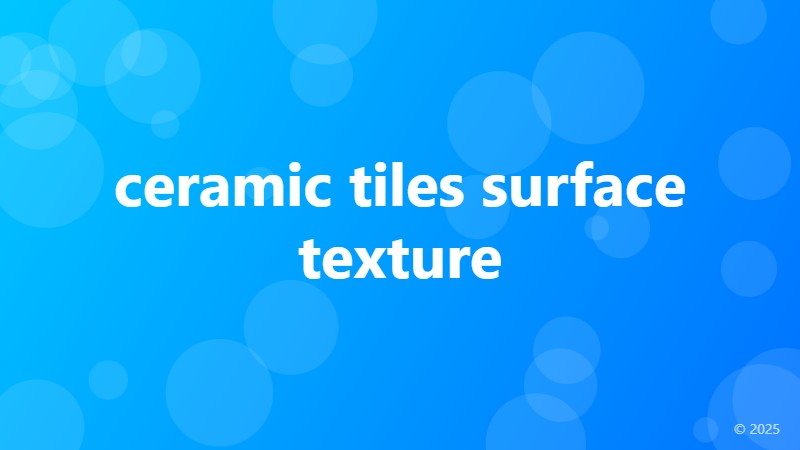ceramic tiles surface texture

The Importance of Surface Texture in Ceramic Tiles
Ceramic tiles have become a popular choice for flooring and wall coverings in recent years, and for good reason. They offer a unique combination of durability, low maintenance, and aesthetic appeal. One of the key factors that contribute to the overall look and feel of ceramic tiles is the surface texture. In this article, we'll delve into the world of ceramic tile surface texture and explore its importance in creating the perfect ambiance in any room.
Types of Ceramic Tile Surface Texture
When it comes to ceramic tile surface texture, there are several options to choose from, each with its own unique characteristics. Some of the most popular types of surface texture include:
Matt finish: A matt finish ceramic tile has a flat, non-reflective surface that is perfect for high-traffic areas. This type of tile is ideal for commercial spaces, as it is easy to clean and maintain.
Gloss finish: A gloss finish ceramic tile, on the other hand, has a shiny, reflective surface that adds a touch of elegance to any room. This type of tile is perfect for residential spaces, as it creates a sense of luxury and sophistication.
Rough finish: A rough finish ceramic tile has a textured, irregular surface that adds depth and character to any room. This type of tile is perfect for outdoor spaces, as it provides traction and slip resistance.
Benefits of Ceramic Tile Surface Texture
The surface texture of ceramic tiles can have a significant impact on the overall ambiance of a room. Some of the benefits of ceramic tile surface texture include:
Aesthetics: The surface texture of ceramic tiles can add visual interest to a room, creating a unique and captivating ambiance.
Traction: The surface texture of ceramic tiles can also provide traction, making it easier to walk on, especially in areas that are prone to moisture.
Durability: The surface texture of ceramic tiles can also affect its durability, with some textures being more resistant to wear and tear than others.
Choosing the Right Ceramic Tile Surface Texture
With so many options to choose from, selecting the right ceramic tile surface texture can be overwhelming. Here are a few tips to keep in mind:
Consider the purpose of the room: Different rooms require different types of surface texture. For example, a high-traffic area may require a matt finish, while a residential space may benefit from a gloss finish.
Think about the style you want to achieve: The surface texture of ceramic tiles can greatly impact the overall style of a room. For example, a rough finish can add a rustic touch, while a gloss finish can create a modern look.
Don't forget about maintenance: Some surface textures may require more maintenance than others. For example, a gloss finish may require more frequent cleaning to maintain its shine.
In conclusion, the surface texture of ceramic tiles plays a crucial role in creating the perfect ambiance in any room. By understanding the different types of surface texture and their benefits, you can make an informed decision when choosing the right ceramic tile for your space.